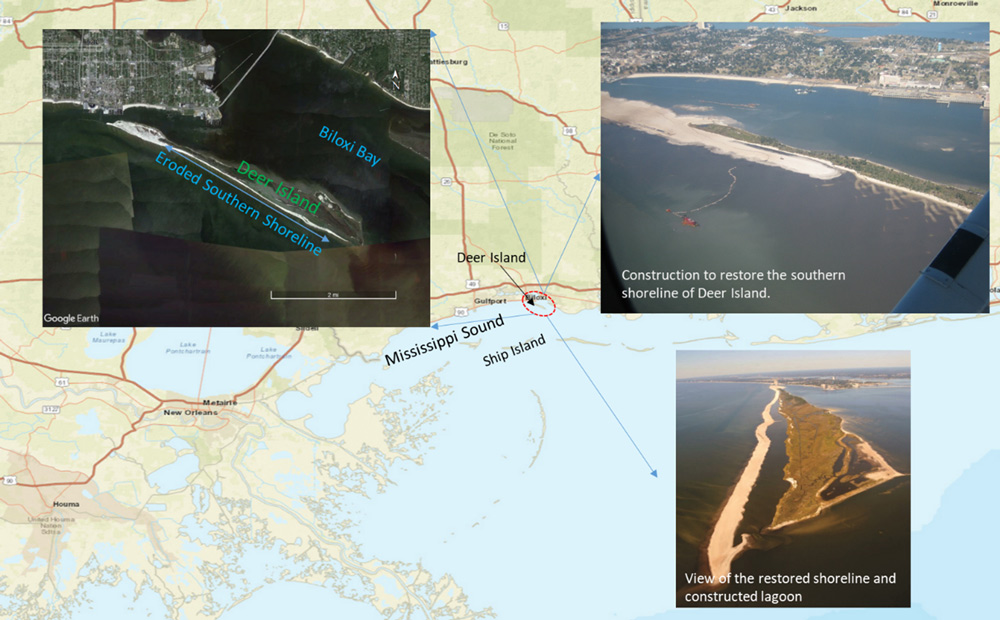
Deer Island, a spindle-shaped 4.5-mile long island, is an extension of the Mississippi coastal mainland (Figure 1). The island suffers severe erosion from high waves and turbulent currents induced by hurricanes. Restoration of Deer Island’s ecosystem is a multi-phase initiative for which the dredged sediment from the Federal channel is being used to restore and repair damage to the island caused by hurricanes, and to create emergent wetland. The ongoing Mississippi Coastal Improvement Program (MsCIP) Deer Island Restoration project led by the USACE Mobile District will create another 400 acres of emergent wetland. Because of the complexities of the restoration history, as well as changes in environmental conditions, evaluation of environmental and social benefits of the ecosystem restoration over this long-term project period is a challenge.
This proposed EWN project is to investigate long-term variations of graded sediment transport, shoreline positions, and beach width in the restored southern shoreline, as well as impacts of the restored emergent tidal marsh on wave attenuation and sedimentation. We plan to study the variations of the environmental variables and project impacts by starting with collecting and analyzing historical field data . On the basis of field data and a better understanding of the physical conditions driving sediment transport and morphological changes, we will then develop multi-dimensional and multiple process numerical models to simulate hydrodynamic and morphodynamic processes around the island and surrounding water areas of the Mississippi Sound. Those simulation results will be used to quantify spatiotemporal variations of sediment transport rates, shoreline erosion rate, wave attenuation, and sedimentation through the marshes. Finally, by using the field data and simulation results from the validated models, we will develop an approach to evaluate the environmental and social benefits of bioengineered breakwater system proposed by the USACE Mobile District for further protection of the restored wetland.
Collaborating with the Mobile District and Northeastern University, this EWN project will produce a suite of validated simulation models for the USACE-SAM Deer Island Restoration project, multi-scale model simulation results, simulation and data-based assessment methodology, technical reports, journal articles, and technical transfer materials.


